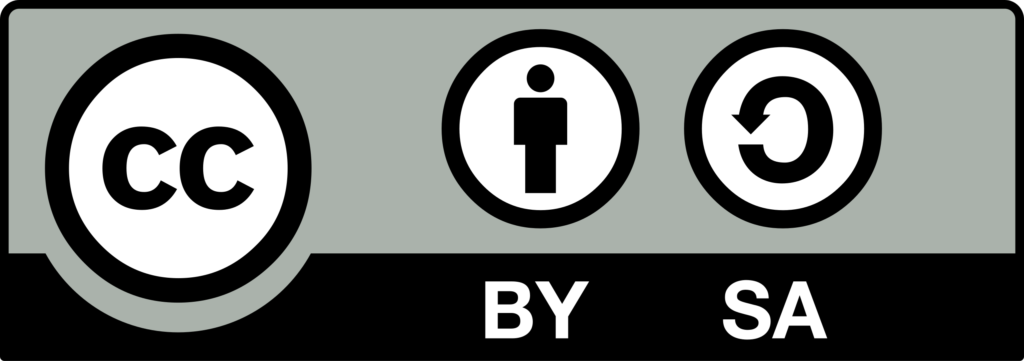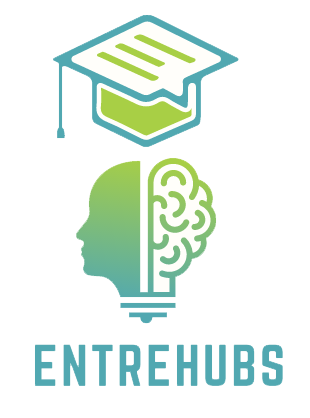You can also download the document from HERE.
General Instructions:
1. There are 10 Techniques for Self-Efficacy and 5 Techniques for Self-Awareness.
2. Complete TWO Techniques for Self-Efficacy and TWO Techniques for Self-Awareness and resubmit this document in Moodle. You can leave the rest of the exercises as is or delete them.
3. You can also complete more than two techniques from each category. Two is the minimum.
_________________________________
Self-Efficacy Worksheet
***Pick 2 of the following techniques to complete for this class***
Technique 1: Mindfulness and Reflection
Exercise: Keep a business journal where you write about your entrepreneurial experiences, emotions, and thoughts. Reflect on what went well and what could be improved.
Worksheet Prompt for Today: Write about a recent business decision you made. What emotions did you feel? What factors influenced your decision? How did the outcome align with your expectations?
This could be the decision to identify a problem and create a solution for it in a form of a business.
________________________________________
Journal Entry:
Date:
Recent Business Decision:
Emotions Felt:
Factors Influencing the Decision:
Outcome and Alignment with Expectations:
Reflections and Areas for Improvement:
________________________________________
Technique 2: Feedback from Others
Exercise: Ask a trusted mentor or colleague to provide feedback on your entrepreneurial strengths and areas for improvement. Reflect on this feedback and consider how you can apply it.
Worksheet Prompt: List three areas where you received constructive feedback. How can you work on these areas? What steps will you take?
If you do not have a mentor, you can ask a friend, a spouse, or a family member.
Remember not to be defensive but rather take their feedback and understand why they view you in that manner.
________________________________________
Feedback Reflection:
Date:
Feedback Provider:
Area 1:
Feedback Received:
Steps to Improve:
Area 2:
Feedback Received:
Steps to Improve:
Area 3:
Feedback Received:
Steps to Improve:
________________________________________
Technique 3: Customer Feedback and Market Research
Exercise: Conduct a series of customer interviews or surveys to gather feedback on your product or service.
Worksheet Prompt: Summarize the key findings from your customer feedback. How do these insights align with your business vision and strategy?
________________________________________
Customer Feedback Summary:
Date:
Method of Feedback Collection (Interviews/Surveys):
Key Findings:
Insight 1:
Alignment with Business Vision and Strategy:
Insight 2:
Alignment with Business Vision and Strategy:
Insight 3:
Alignment with Business Vision and Strategy:
________________________________________
Technique 4: Networking and Peer Learning
Exercise: Attend a networking event or join an entrepreneurial community online or offline.
Worksheet Prompt: Write about a valuable insight or piece of advice you received from a peer or networking event. How can you apply it to your business?
You can utilize one of our Entrehubs Afternoon Group Workshops for this activity.
________________________________________
Networking Reflection:
Date of Event:
Event/Community:
Valuable Insight or Advice Received:
Source (Peer/Networking Contact):
Application to Your Business:
Next Steps:
________________________________________
Technique 5: Mind Mapping for Business Strategy
Exercise: Create a mind map that explores a recent business challenge or strategic decision. Include your thoughts, emotions, and potential outcomes.
Worksheet Prompt: Analyze your mind map. What patterns or connections do you see? How does this visual representation help you understand your business strategy?
________________________________________
Mind Map Analysis:
Date:
Business Challenge/Strategic Decision:
Mind Map Elements:
Thoughts:
Emotions:
Potential Outcomes:
Patterns/Connections Observed:
Understanding Gained About Business Strategy:
________________________________________
Technique 6: Set Achievable Business Goals
Exercise: Set a SMART goal related to a current business challenge. Break it down into smaller, manageable steps.
Worksheet Prompt: Outline your SMART business goal and the steps you will take to achieve it. How will you measure your progress?
You can use one of the ideas you identified in the Spotting Opportunities Module on the first day.
________________________________________
SMART Goal Setting:
Date:
Business Challenge:
SMART Goal:
Specific:
Measurable:
Achievable:
Relevant:
Time-bound:
Steps to Achieve the Goal:
1.
2.
3.
4.
5.
Progress Measurement:
________________________________________
Technique 7: Skill Development for Entrepreneurs
Exercise: Identify a business skill you want to develop and find a course or workshop to attend.
Worksheet Prompt: Describe the entrepreneurial skill you want to develop and why it is important to your business. Outline the steps you will take to acquire this skill.
________________________________________
Skill Development Plan:
Date:
Entrepreneurial Skill to Develop:
Importance to Business:
Steps to Acquire the Skill:
1.
2.
3.
4.
5.
Courses/Workshops to Attend:
________________________________________
Technique 8: Positive Visualization for Business Success
Exercise: Spend 5 minutes each day visualizing yourself achieving a specific business goal.
Worksheet Prompt: Write about your visualization experience. How did it make you feel? What steps did you visualize taking?
________________________________________
Visualization Reflection:
Date:
Business Goal Visualized:
Feelings Experienced:
Steps Visualized:
Impact on Motivation and Confidence:
________________________________________
Technique 9: Build a Support Network
Exercise: Identify potential mentors or supportive peers and reach out to them.
Worksheet Prompt: List three individuals who could be part of your entrepreneurial support network. How can they help you build self-efficacy?
________________________________________
Support Network Plan:
Date:
Potential Mentor/Peer 1:
How They Can Help:
Potential Mentor/Peer 2:
How They Can Help:
Potential Mentor/Peer 3:
How They Can Help:
Steps to Reach Out:
________________________________________
Technique 10: Reflect on Business Successes
Exercise: Write about a past business success and the steps you took to achieve it. Reflect on how you can apply those strategies to current business challenges.
Worksheet Prompt: Describe a past business success in detail. What strategies did you use? How can you apply these strategies to your current business goals?
________________________________________
Success Reflection:
Date:
Past Business Success:
Strategies Used:
1.
2.
3.
Application to Current Business Goals:
1.
2.
3.
Self-Awareness Exercises
***Pick 2 of the following techniques to complete for this class***
Technique 1: SWOT Analysis of Personal Leadership
Exercise: Perform a personal SWOT analysis focusing on your leadership and decision-making abilities.
Worksheet Prompt: List your strengths, weaknesses, opportunities, and threats as an entrepreneur. Reflect on how these factors influence your business decisions.
SWOT Analysis Worksheet
Date:
Strengths:
1.
2.
3.
Weaknesses:
1.
2.
3.
Opportunities:
1.
2.
3.
Threats:
1.
2.
3.
Reflection:
• How do these strengths and weaknesses influence your business decisions?
• How can you leverage opportunities and mitigate threats?
________________________________________
Technique 2: Emotional Intelligence Assessment
Exercise: Take an emotional intelligence assessment and reflect on the results.
Choose one of the following EI assessments:
https://globalleadershipfoundation.com/geit/eitest.html
https://www.ihhp.com/free-eq-quiz/
https://www.truity.com/test/emotional-intelligence-test
https://eqdna.mtdtraining.com/
Worksheet Prompt: Summarize the key findings from your EI assessment. How do your emotional intelligence skills impact your interactions and decision-making in your business?
Emotional Intelligence Assessment Worksheet
Date:
Key Findings from EI Assessment:
1.
2.
3.
Impact on Interactions:
• How do these findings affect your relationships with your team, partners, and clients?
Impact on Decision-Making:
• How do these findings influence your decision-making process?
Reflection:
• What are your areas of strength in emotional intelligence?
• What areas need improvement?
________________________________________
Technique 3: Reflective Reading and Application
Exercise: Choose a book or article about entrepreneurship, read it, and reflect on the lessons learned.
You can look for your own article (if you do please place link here: insert link] OR choose one of the following articles:
https://hbr.org/2021/07/entrepreneurs-and-the-truth
https://hbr.org/1985/03/the-heart-of-entrepreneurship
https://www.businessnewsdaily.com/7275-entrepreneurship-defined.html
https://www.forbes.com/sites/darreonnadavis/2023/06/23/heres-what-an-entrepreneur-isand-how-you-can-become-one/
Worksheet Prompt: Write about a key lesson or strategy from your reading. How can you apply this lesson to your business? What personal insights did you gain?
________________________________________
Reflective Reading Worksheet
Date:
Title of Book/Article:
Key Lesson/Strategy:
• Describe a key lesson or strategy you learned.
Application to Business:
• How can you apply this lesson to your business?
Personal Insights:
• What personal insights did you gain from this reading?
Next Steps:
• What actions will you take based on these insights?
________________________________________
Technique 4: Role-Playing and Scenario Analysis
Exercise: With a mentor or peer, role-play a challenging business scenario and analyze your responses and decisions.
Worksheet Prompt: Describe the scenario you role-played. What was your initial reaction? How did you handle the situation? What did you learn about your decision-making process?
________________________________________
Role-Playing and Scenario Analysis Worksheet
Date:
Scenario Description:
• Describe the business scenario you role-played.
Initial Reaction:
• What was your initial reaction to the scenario?
Handling the Situation:
• How did you handle the situation?
Lessons Learned:
• What did you learn about your decision-making process?
Reflection:
• How can you apply these lessons to real-life situations in your business?
________________________________________
Technique 5: Regular Self-Assessment and Goal Setting
Exercise: Perform a self-assessment at the end of each month to evaluate your progress and set goals for the next month.
Worksheet Prompt: Reflect on your accomplishments and challenges over the past month. What goals did you achieve? What areas need improvement? Set specific goals for the upcoming month.
________________________________________
Self-Assessment and Goal Setting Worksheet
Date:
Monthly Accomplishments:
1.
2.
3.
Challenges Faced:
1.
2.
3.
Goals Achieved:
• List the goals you achieved this month.
Areas for Improvement:
• Identify areas that need improvement.
Goals for Next Month:
1.
2.
3.
Action Plan:
• Outline the steps you will take to achieve these goals.
Reflection:
• What did you learn from your accomplishments and challenges this month?


